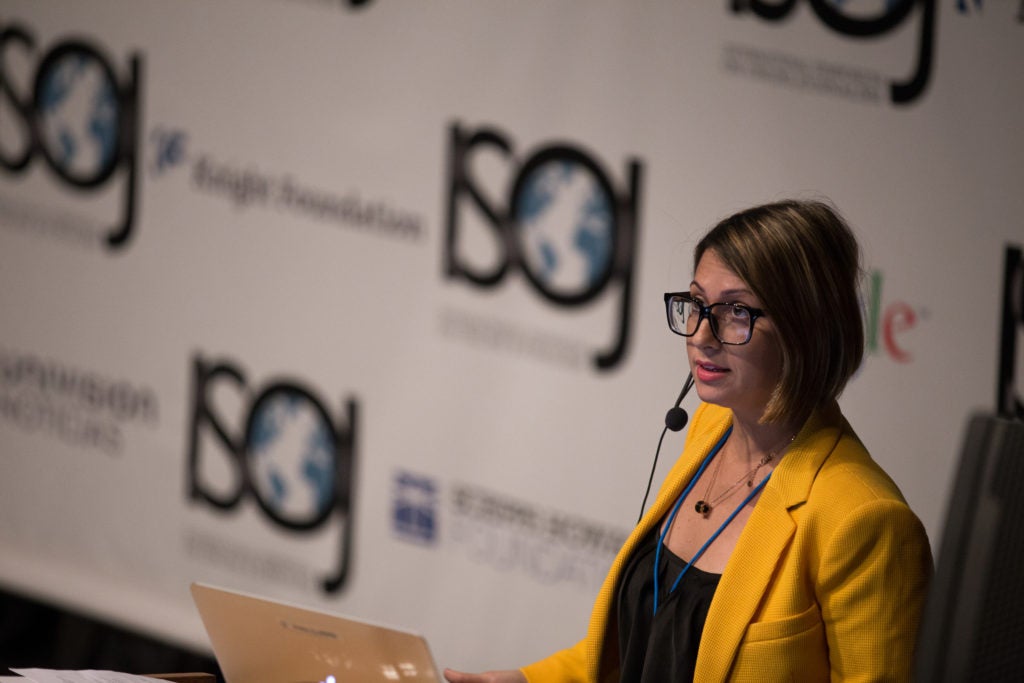April 18, 2015 | Business Models, Research
Changes in journalism structures, systems and processes addressed by researchers at ISOJ
Knowing how to deal with transformations and experimenting with new possibilities is crucial for the survival of journalism. This is one of the main lessons offered by the research panel, “The changing tide in journalism structures, systems and processes,” at the International Symposium on Online Journalism (ISOJ) on Saturday.
Research from the United States and Brazil was shared and discussed at the Blanton Museum of Art, on the campus of the University of Texas at Austin.

Presenting the article “Picking the NYT Picks: Editorial criteria and automation in the curation of online news comments,” Nicholas Diakopoulos, from the University of Maryland, talked about the process of selecting and evaluating comments on online newspapers.
He explained that there are tools capable of calculating scores with certain types of criteria, such as readability, personal experience, and brevity/length.
“With the automation of editorial criteria, we will be able to personalize user experience in the comments session,” Diakopoulos said.
Soraia Souza, from Estácio de Sá University, Brazil, introduced her article titled, “The age of digital collaboration: A case study of Arquitetura da Gentrificação, a Brazilian collaborative platform for citizen journalism.” She said that independent and investigative journalism is very time-consuming in Brazil if you are not part of the 10 families that control mainstream media there because access to information becomes difficult.
“Crowdfunding is still not a feasible way of financing projects in Brazil,” Souza added.
From Texas State University, Cindy Royal presented the research she conducted with Dale Blasingame, “Data journalism: An explication.” She said they were interested in understanding how scholars and journalists conceptualize data journalism, so they collected written and oral material. A trailer of their video is available here.
One of the outcomes of their research is a broad definition of data journalism: “Data journalism is a process by which analysis and presentation of data are employed to better inform and engage the public. Its roots are in the fields of computer-assisted and investigative reporting, but data journalism products may add engagement through customization and user contribution made possible by Web development and programming techniques.”

Joshua Scacco, from Purdue University, presented “Digital divisions: Organizational gatekeeping practices in the context of online news,” a study conducted with Alexander Curry and Natalie Stroud from the University of Texas at Austin.
He explained that the material was collected during workshops with journalists as part of the Engaging News Project, which was designed to provide research-based techniques for engaging online audiences in commercially viable and democratically beneficial ways.
“News organizations have to understand that there is still room for learning. What happens if no one in the newsroom has been trained to deal with a huge amount of data?” Scacco asked. “Or if some have, but they don’t share this knowledge with their colleagues?”
This 16th annual edition of ISOJ is being live streamed in English here, and in Spanish here.
ISOJ 2015: Changing Tide in Journalism Structures Q&A, from Knight Center on Vimeo.

